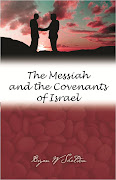“But now Christ is risen”, for: “He … presented Himself alive after His suffering by many infallible proofs, being seen by them during forty days and speaking of the things pertaining to the kingdom of God” (Acts 1:3). There are ten recorded resurrection appearances over a period of almost six weeks.
(i) To
Mary of Magdala. (John 20:14 ff)
(ii) To
others of the women. (Matt.28:9,10)
(iii) To Peter on his own. (Luke 24:34; 1 Cor.15:5)
(iv) To the two on the road to Emmaus.(Luke 24:13 ff)
(v) To
a group of disciples when Thomas was absent. (Luke 24:36 ff)
(vi) To the disciples when Thomas was present. (John 20:26 ff)
(vii) To the seven disciples by the Lake .(John 21:1 ff)
(viii) To
a company of more than 500, in Galilee . (1 Cor.15:6)
(ix) To James, the half-brother of the Lord. (1 Cor. 15:7)
(x) To those who witnessed the ascension. (Luke 24:50,51; Acts 1:9)
Post-Ascension
Appearances
(i) To Stephen: (Acts 7:56)
(ii) To Paul: (Acts 9:3 ff)
The Importance of the Resurrection Appearances to the Disciples
These resurrection
appearances were not for the nation, but for the disciples. They confirmed
those major truths that have engaged us. Jesus of Nazareth was:
(a) Israel
(b) and God incarnate.
(c) He is the lifted up One, as physically
demonstrated not only by His crucifixion but also by His ascension.
(d) He has the serpent in subjection. His
presence at the right hand of power by the throne of God confirms this.
(e) He has the authority to forgive sins, because
(f) He paid the price. The ‘blood on the ground’
was His.
(a) The truth that Jesus is Israel
To the two on the road to Emmaus, Jesus, as a
travelling Rabbi, explained from the T’nach the prophecies of Messiah’s
suffering, and then connected those prophetic Scriptures to the life of their
Master. He explained that the Jesus whom they saw crucified, was in fact ‘Messiah
the Prince’ of Daniel,[1] and
that the resurrection that they found so difficult to believe, was a part of
God’s great plan: “Ought not the Christ (Messiah) to have suffered these things
and to enter into His glory?” (Luke 24:26) Later
that day, when He visited the gathering of the disciples in Jerusalem, He
repeated the discourse; and said to them, “These are the words which I spoke to you while I was still with you,
that all things must be fulfilled which were written in the Law of Moses and the Prophets and the Psalms concerning Me…Thus it is
written, and thus it was necessary for the Christ (Messiah) to suffer and to
rise from the dead the third day”. (Luke 24:44-46)
More Next Time

